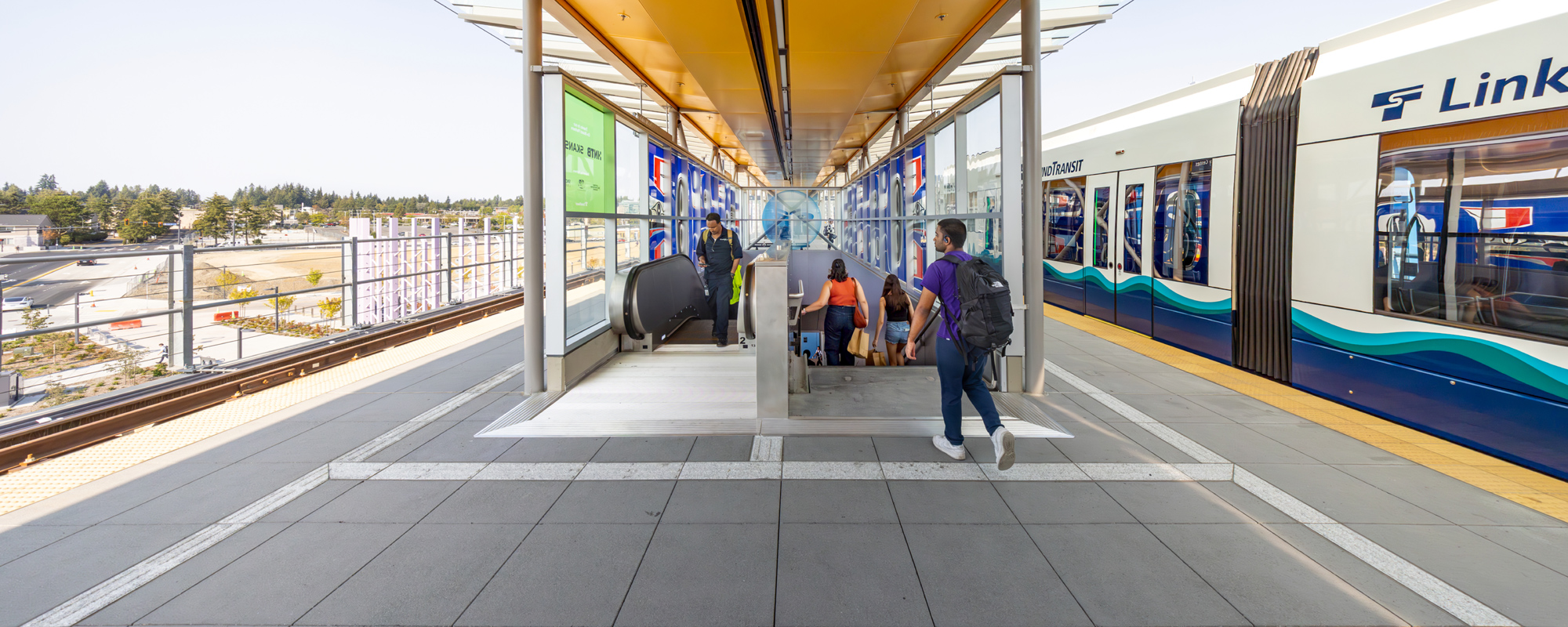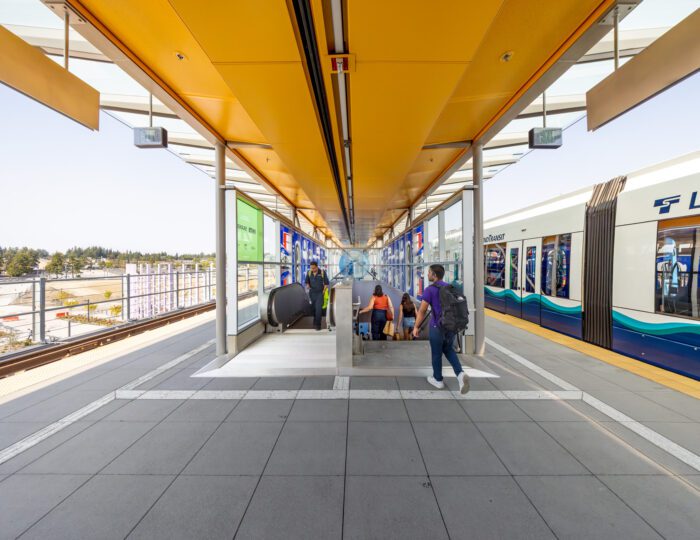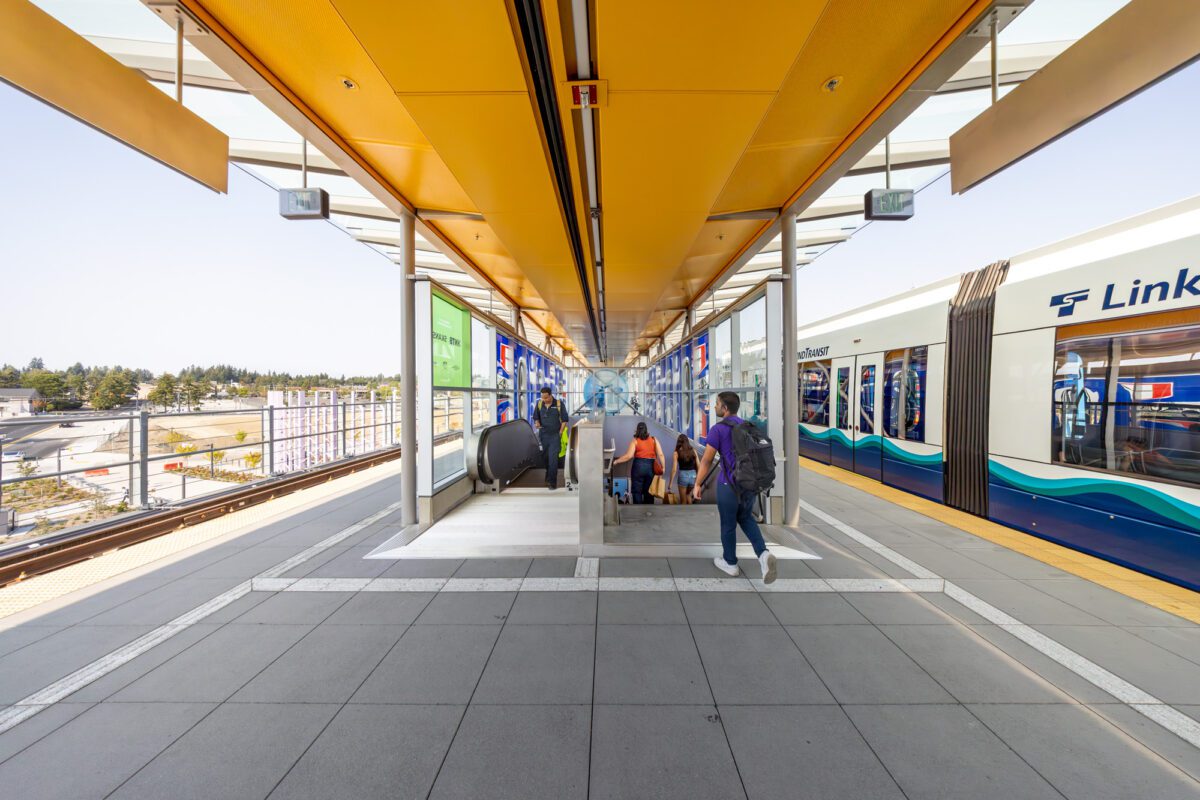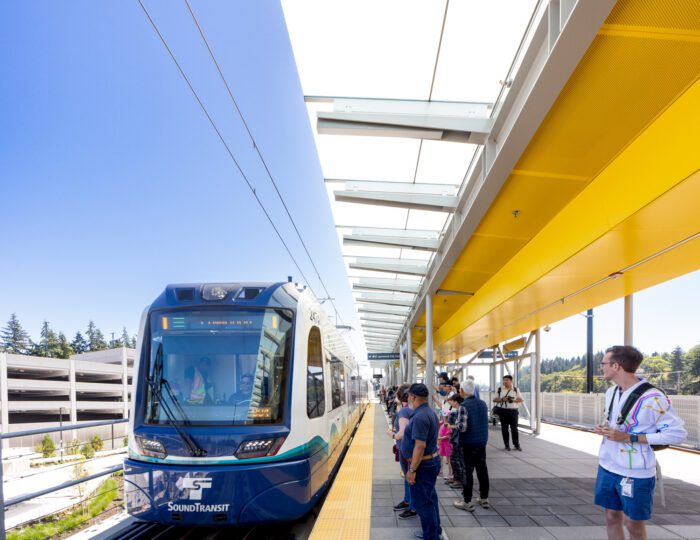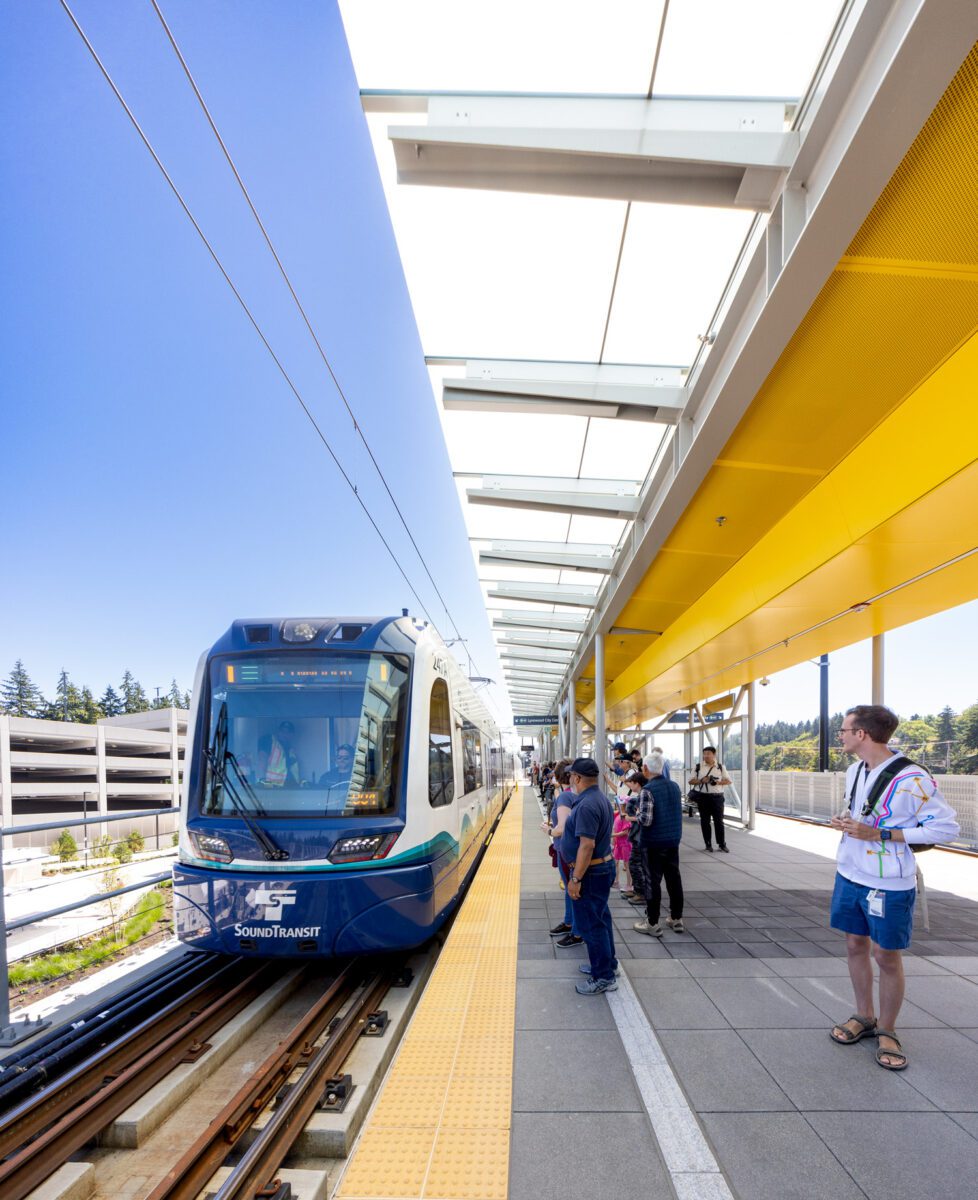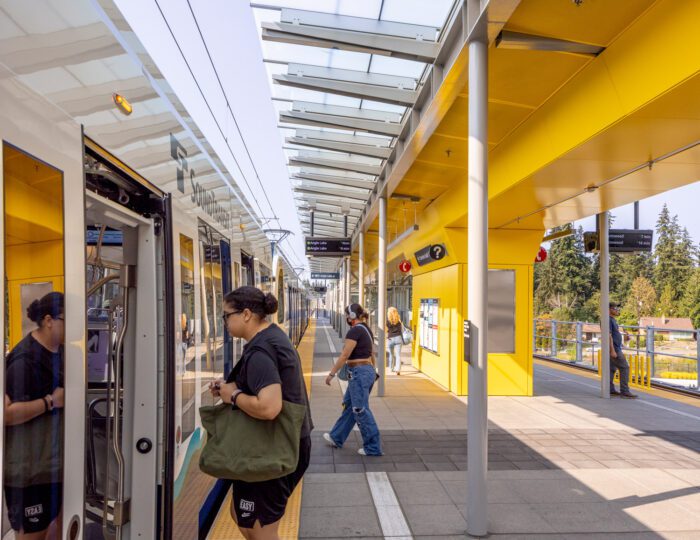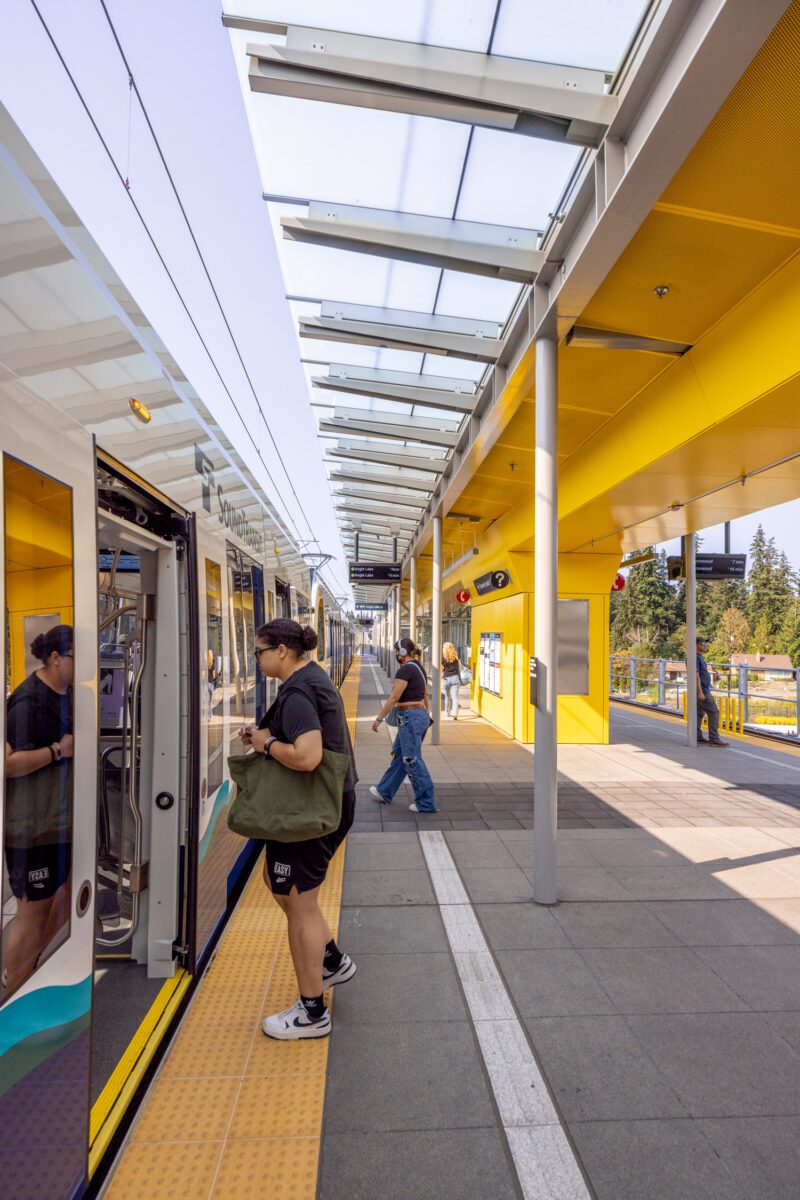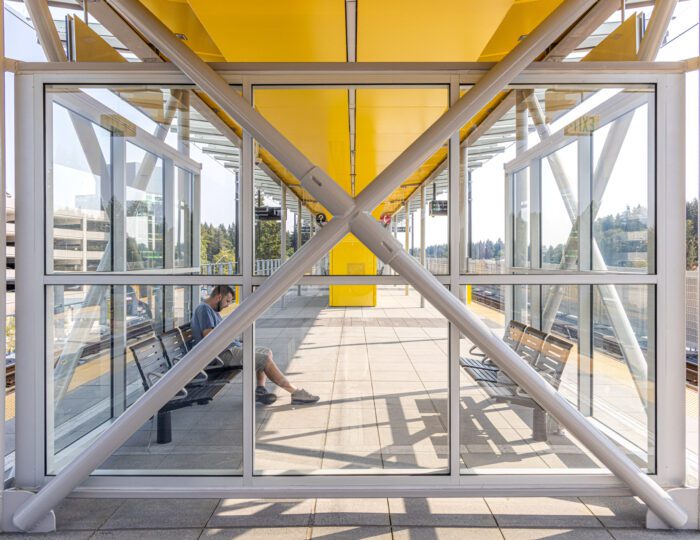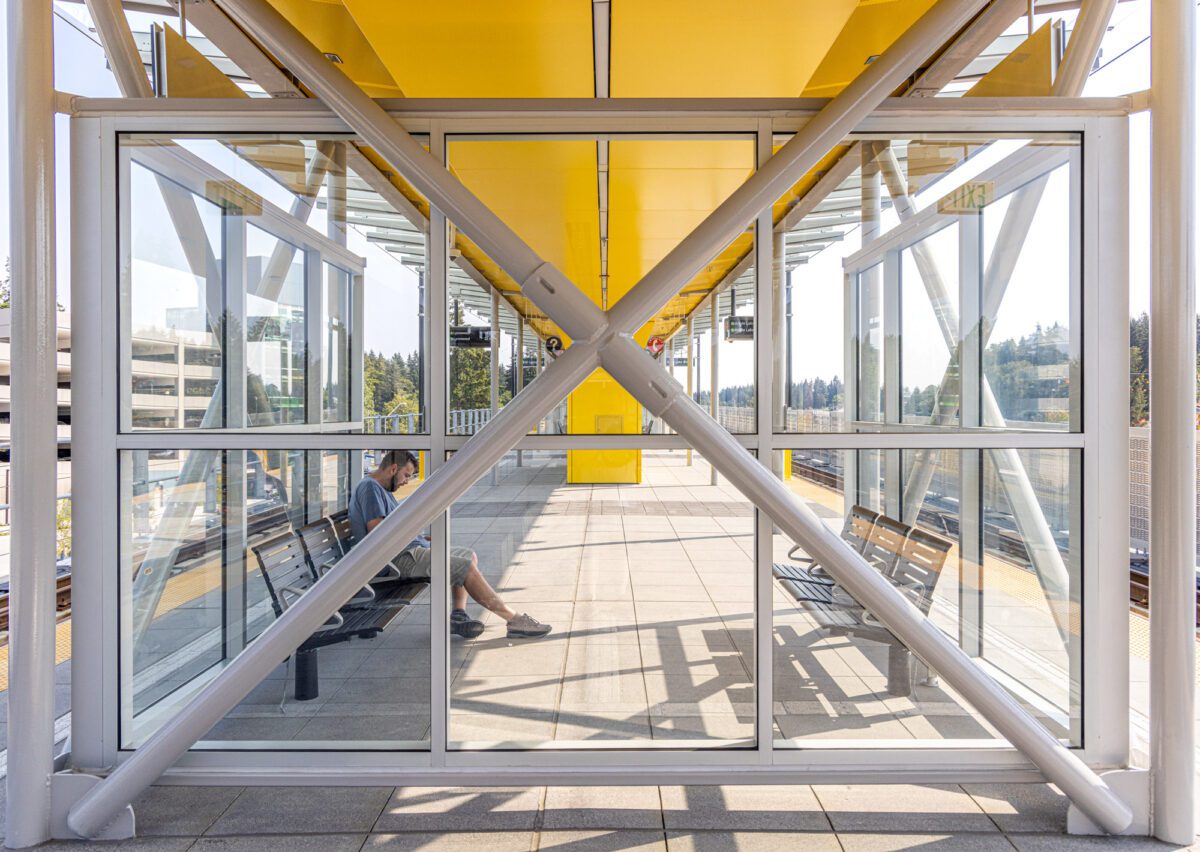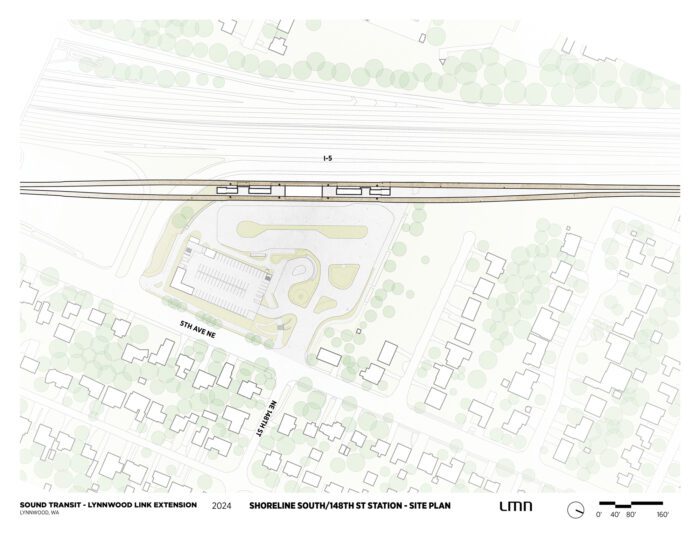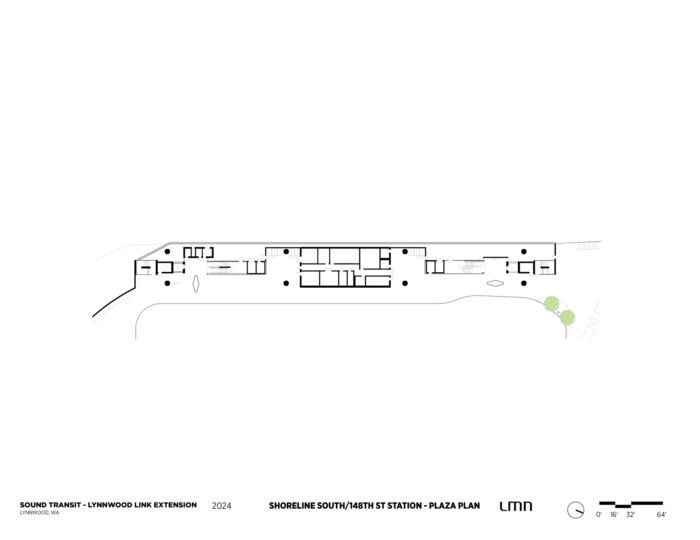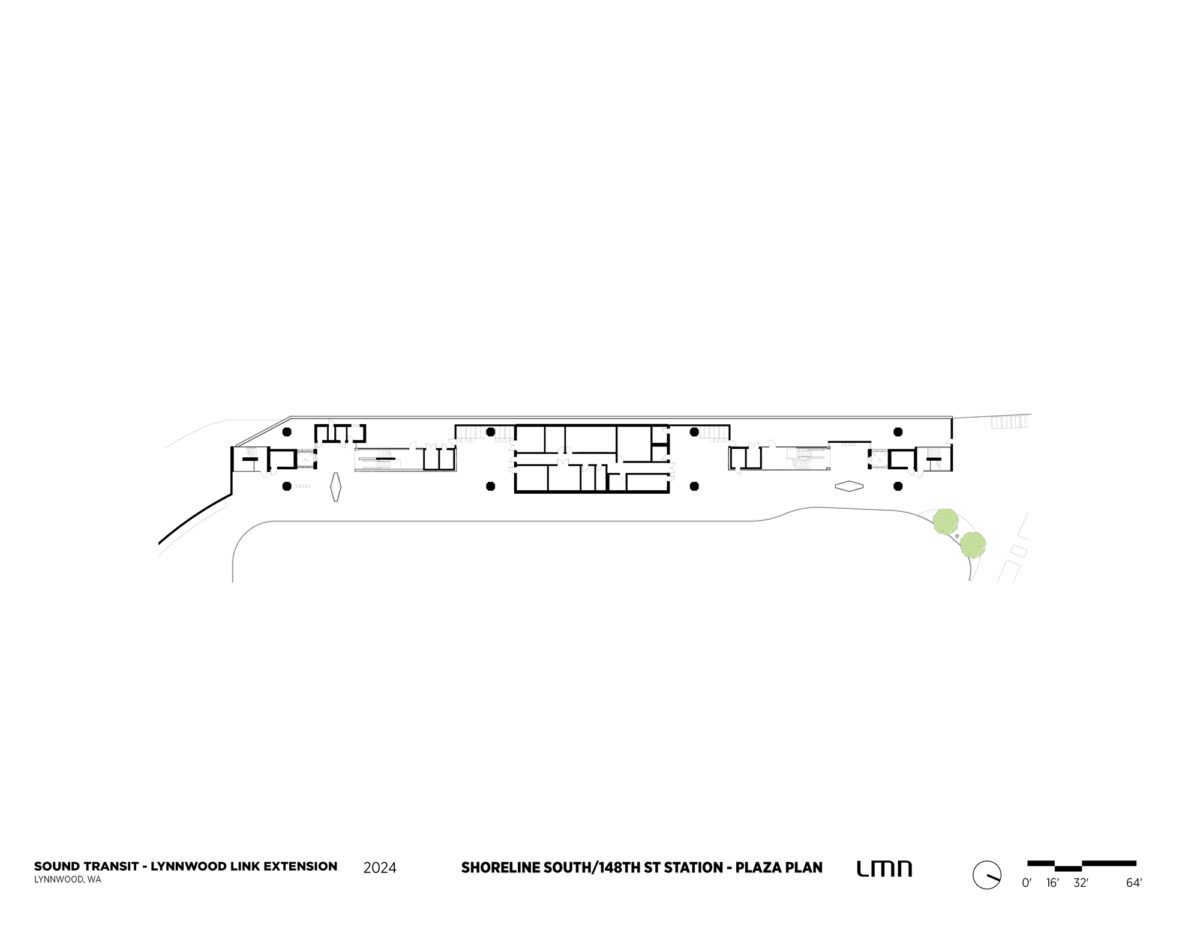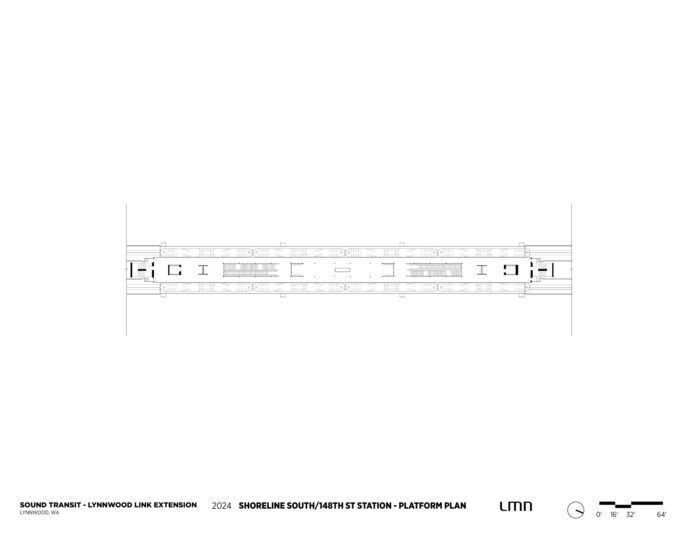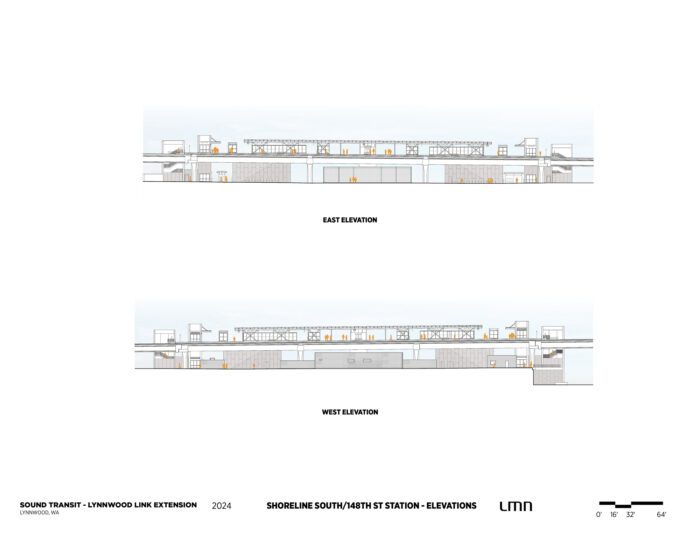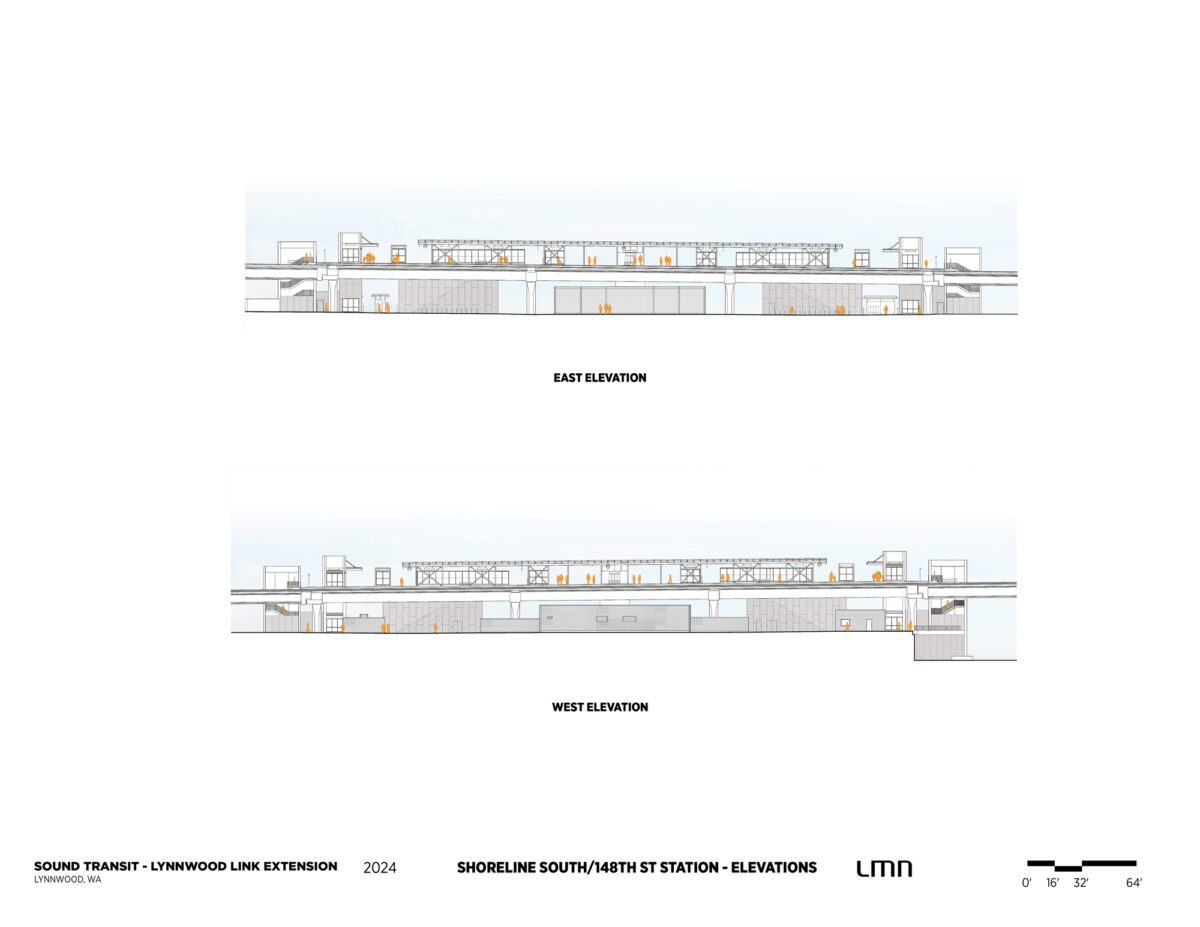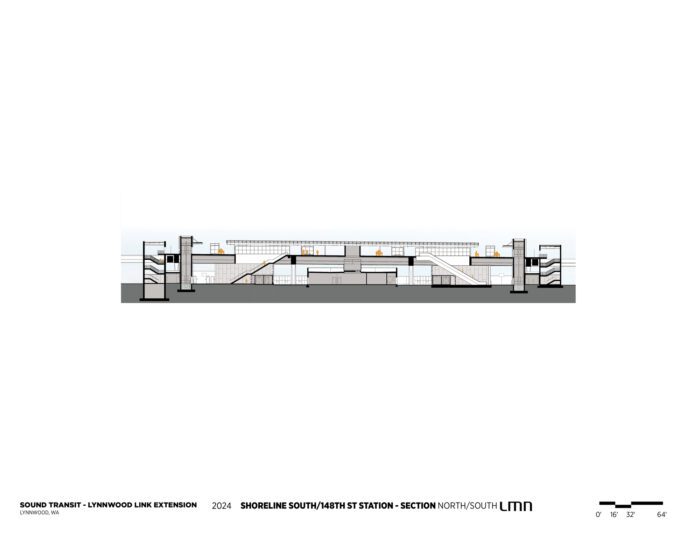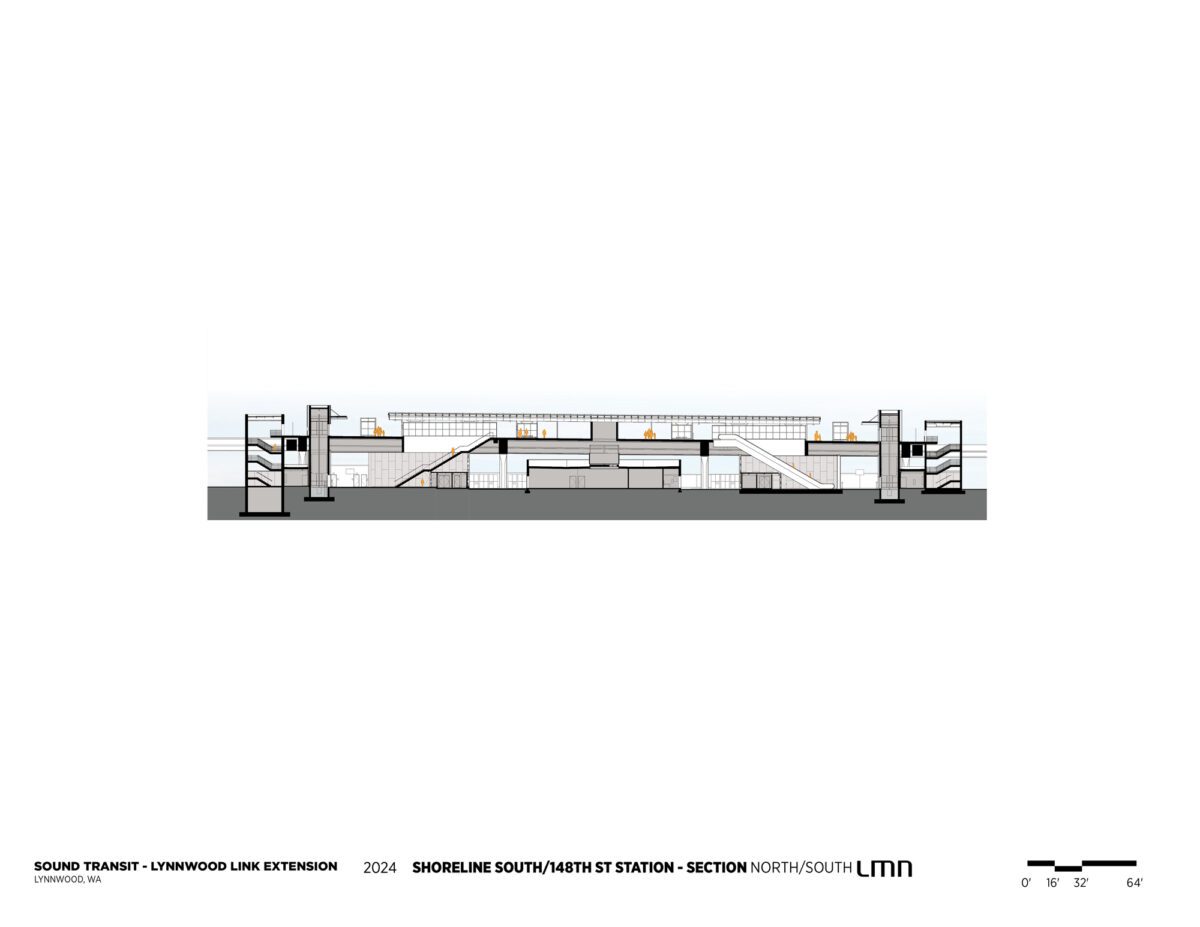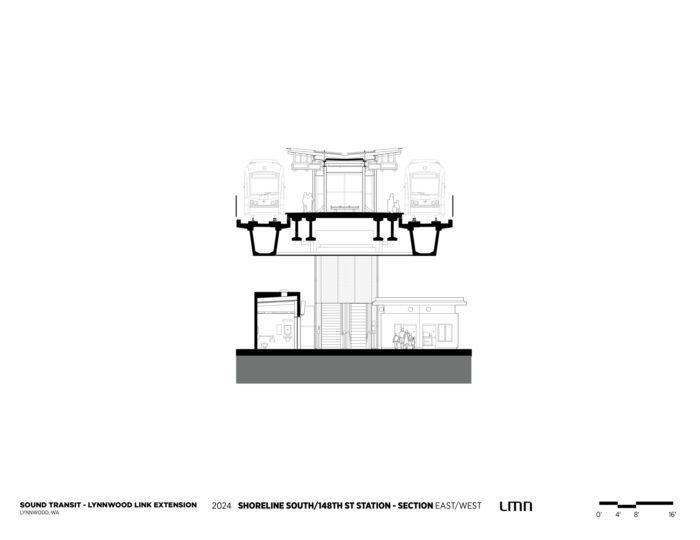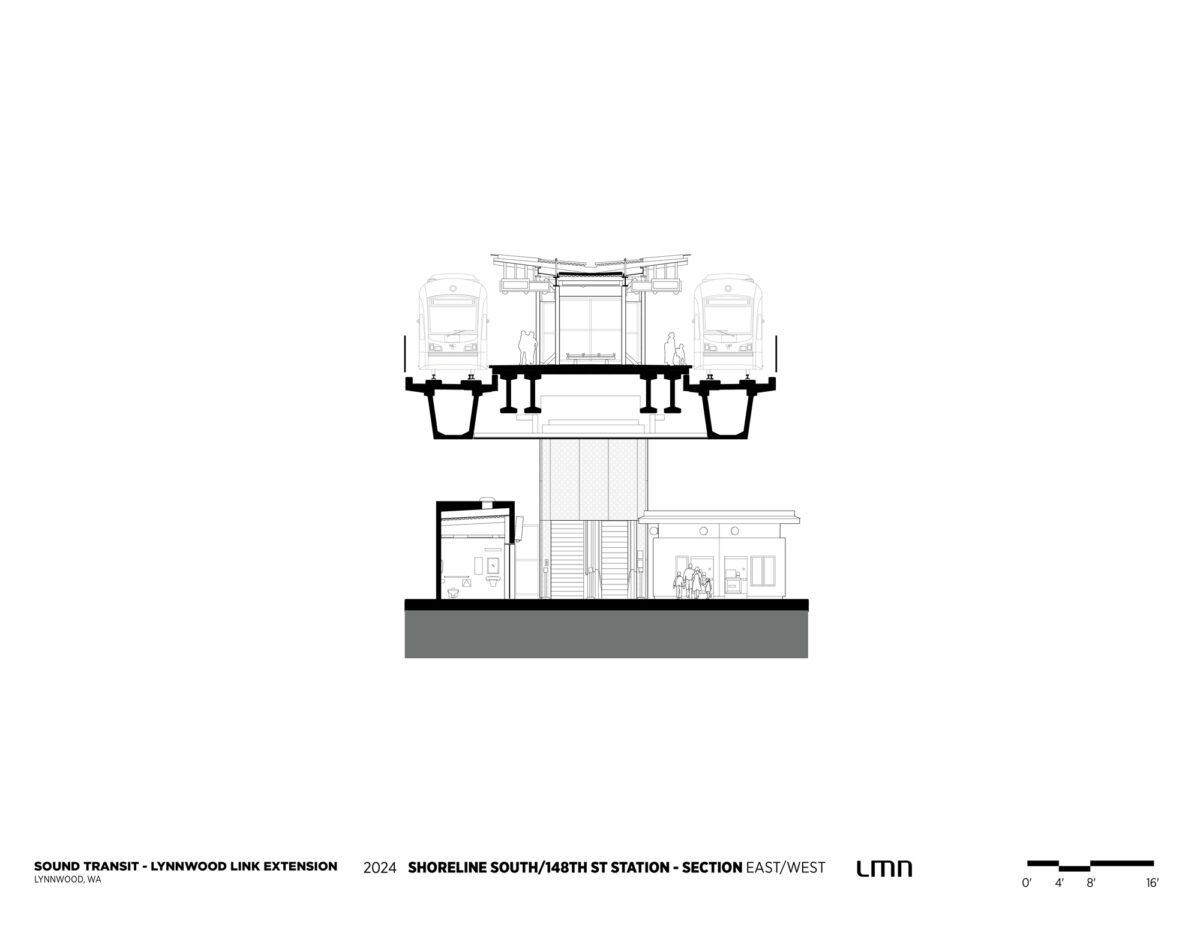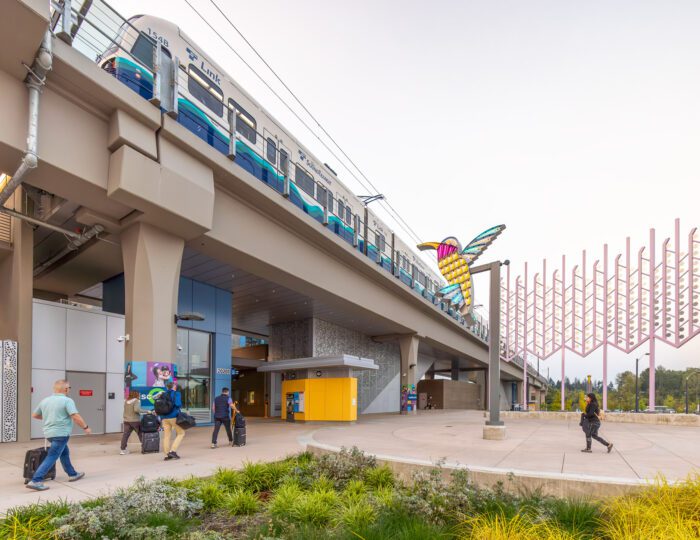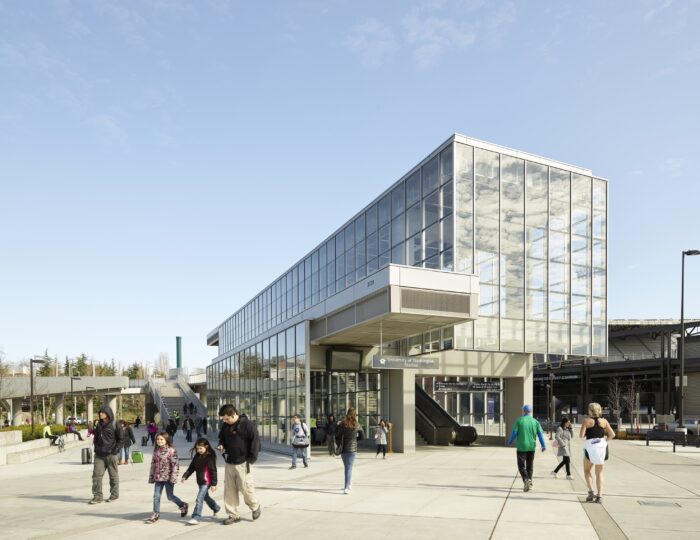Location
Shoreline, Washington
Owner
Sound Transit
Prime Consultant: HNTB and Jacobs Engineering Group
General Contractor: Stacy Witbeck Atkinson, Kiewit Corporation, and Hoffman Construction
Structural Engineering: Jacobs Engineering Group
MEP and Fire Protection Engineering: Rushing Co.
Civil Engineering: KPFF Consulting Engineers
Landscape Architecture: HBB Landscape Architects
Traffic Consultant: HNTB
Buster Simpson: Artist
Project Size
10,509 square feet
Project Status
Completed
Services
Architecture, Planning, Urban Design
Since 1996, the Seattle metropolitan region has been developing one of the largest transit systems in the country with its Sound Transit Link light rail. Now, Sound Transit is expanding north with the Lynnwood Link Extension, connecting existing stations at Sea-Tac Airport, downtown Seattle and the University of Washington with Snohomish County. The extension includes four new multimodal stations, with an approved fifth infill station under construction. LMN served as architectural design lead for the extension, led design oversight across all station architecture, and was primary architect on three stations.
Beginning at the southernmost end of Lynnwood Link, LMN designed the Shoreline South/148th Station. The elevated station sits north of the boundary between Seattle and the city of Shoreline, serving as a catalyst for denser, more transit-oriented neighborhoods in Shoreline. Establishing a multimodal transit hub, the station shares a plaza with an existing bus loop facilitating easy transfers between bus and rail, while new bicycle infrastructure will connect to a future pedestrian bridge and a regional shared-use path. A new five-story parking garage accommodates park-and-ride commuters and creates a street-edge presence while reestablishing the neighborhood fabric. The adjacent drop-off area can be transformed into a stage, facilitating community events and neighborhood gatherings. Bright yellow ticketing and wayfinding kiosks mark the entries at either end of the station, while elevator towers clad in blue metal panels provide strong vertical elements bookending the platform. Metal panels enclosing the stairs and elevators are perforated in a design that mimics the annular ring cellular pattern of local Douglas Fir trees. A bright blue painted steel and concrete installation entitled “Flow” by Seattle artist Buster Simpson animates the exterior plaza, recognizing the Thornton creek watershed while highlighting the path of stormwater from the station’s parking garage to sculptural cisterns. On sunny days, the installation tracks the path of the sun, helping connect riders to the larger environment.
Photography: Adam Hunter
